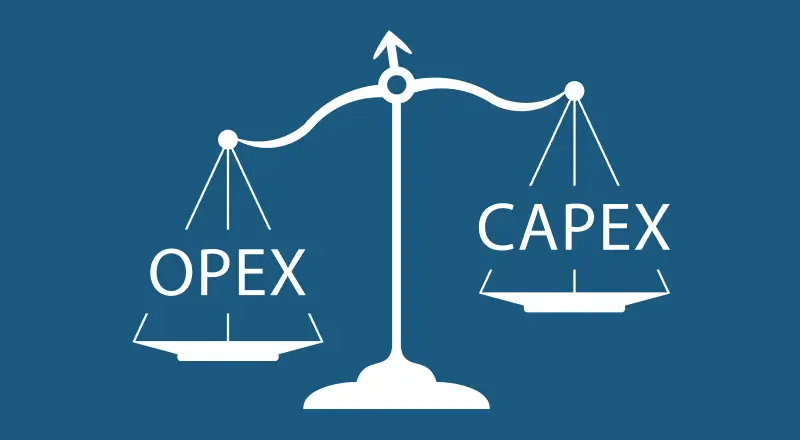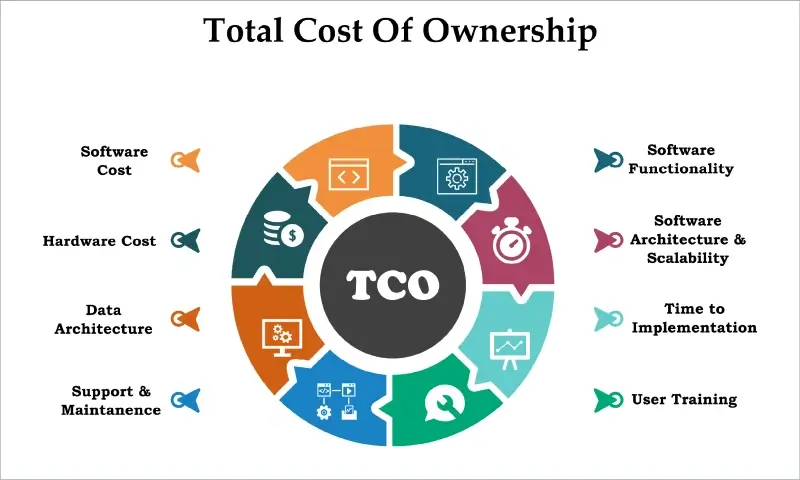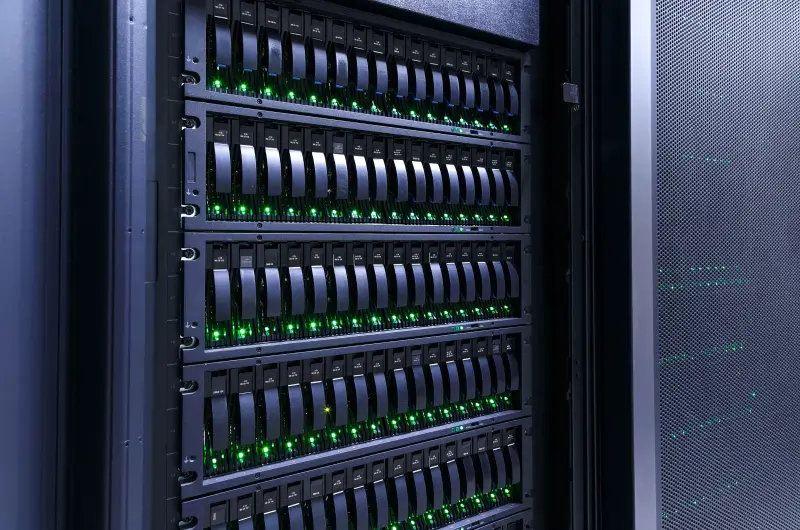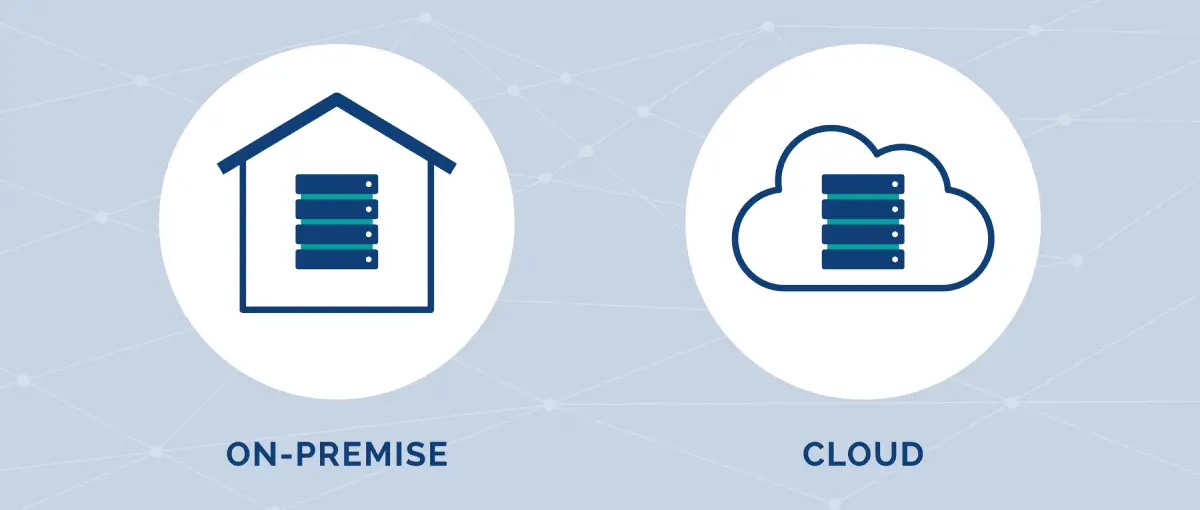The world generates about 400 million terabytes of data every day, according to recent research from Statista. All of that data has to go somewhere. And the amount is expected to grow over time.
The staggering volume of new data creates a challenge for many businesses and home users. Both from a standpoint of immediate storage and how to scale for the future.
For the most part, there are two strategies for data storage.
A cloud service provides virtual storage space on remote servers for a subscription fee. You can access your files from any device connected to the internet. On-premise storage maintains data on owned hardware and a local network. You must manage physical access, system updates, backup mechanisms, and security protocols.
This article explains the cost of cloud services and on-premise storage and offers tips for choosing the right approach.
Here’s a brief overview of what you need to know:
- The cost of cloud platforms and on-premise storage varies based on usage and required hardware.
- Cloud storage is cheaper upfront, but features recurring expenses based on the amount of data, access patterns, and file transfers.
- On-premise storage has higher initial costs. However, it provides users more performance and control over how data is stored.
- A hybrid model that uses a cloud service for rarely accessed data and on-premise storage for demanding workloads.
Understanding OpEx and CapEx
Costs for a cloud service or on-premise storage fall into separate categories.
Using a cloud platform is an operating expense (OpEx). The recurring cost is included in the quarterly and yearly budgets. Subscribers make ongoing payments for a set amount of virtual storage space based on their usage. Costs are fully expensed in the period incurred. In most cases, cloud services charge monthly fees, but sometimes they offer longer terms at lower rates. This setup allows businesses and individuals to pay as needed and scale up or down with demand.

Building data storage infrastructure on premises is a capital expense (CapEx). The costs are upfront investments in long-lived assets like storage devices, enterprise servers, and networking gear. These projects are paid for out of capital budgets and then amortized over their useful life. The capacity of on-premise storage is fixed without further investment. Maintenance of the equipment also involves some operating expenses.
Budgets, cash flow, tax treatment, legal compliance, and performance requirements affect OpEx and CapEx decisions.
Cost Comparison: Cloud Services vs. On-Premise Storage
Cost comparisons of a cloud service and on-premise storage must account for direct and hidden expenses.
Direct Costs
These are the direct costs of a cloud service:
- Tiered subscription for cloud storage and archives
- Retrieval and transfer fees
- Charges for API requests to upload, download, or list files
The price of a cloud service depends on usage. Constant access to a large pool of data is a more expensive tier than deep archives. Platforms charge fees to retrieve data from cold storage or transfer files as well. API calls are billed in increments after exceeding a plan’s allotted operations.
Direct costs of on-premise storage include:
- Buying or upgrading hard drives and SSDs
- Disk enclosures, RAID controllers, and servers
- Networking gear like switches and routers
- Software licensing to manage networks and stored data
- Ongoing support contracts
On-premise storage hardware costs are front-loaded compared to subscriptions. Still, the model is more flexible and provides a depreciation schedule.
Indirect Costs
Indirect costs impact cloud storage services, such as:
- Billing surprises
- Unused overhead
As mentioned, cloud services have costs besides the subscription fee. Users also face egress fees when moving data out of the cloud. A sudden spike in API calls could lead to a much larger bill for a period. Both expenses can break a tight budget. In addition, businesses and households sometimes pay for a higher tier than needed. The wasted storage space is a cost for subscribers.
The following expenses are some hidden costs of on-premise storage:
- Salaries for IT staff
- Physical space for disk arrays
- Robust HVAC systems
- Downtime risk for local disasters
On-premise storage could require full-time staff to oversee it depending on the scale. The cost of owning infrastructure still goes beyond hardware and employees. Businesses must devote real estate or floor space in their current building to servers. These setups consume power and generate lots of heat, making HVAC systems essential. They also carry higher risk for downtime if a natural disaster or catastrophic event affects the site.
Calculating Total Cost of Ownership (TCO)

Total cost of ownership (TCO) is the sum of all expenses involved in a storage model. This figure combines the cost to acquire hardware, purchase software licenses, and operate storage infrastructure. TCO is a critical metric for cloud services and data centers. However, it is still important for businesses and the public.
Thankfully, there are TCO calculators for Amazon Web Services (AWS), Microsoft Azure, and Google Cloud Platform (GCP). Transact, a fintech company that serves education and healthcare institutions, created a feature to calculate TCO for on-premise storage. These tools can help decision-makers determine the better return on investment (ROI) and find break-even timelines.
Using precise numbers gives a much clearer picture of the total cost of cloud services and on-premise storage.
How To Reduce Cloud TCO
Here are some tips to lower the cost of a cloud storage service:
- Choose the right tier and pricing model.
- Monitor usage and migrate rarely accessed data to cheaper tiers.
- Minimize transfers to different regions within the same cloud.
- Adopt a multi-platform approach to take advantage of discounts and offers.
- Conduct audits to optimize a storage model further.
These strategies can help control costs while enjoying the convenience of cloud storage.
Other Factors to Consider When Choosing Storage Models
Cost is not the only concern when selecting your storage solution. IT teams and people should consider other issues that affect stored data before committing to a model.
Future Demand
Increased or decreased demand for data storage in the future often informs the decision. Scaling to meet elastic demand is much easier with a cloud service than continued investments in new hardware or surplus equipment sales.
Performance Requirements
Some workloads need low latencies above all else. An on-premise setup with high-performance drives can offer more sustained throughput for intensive tasks.
Security Measures
Strict compliance with privacy rules might push entities toward on-premise storage. This model allows businesses to implement tight controls for stored data that a shared platform like the cloud cannot.
Disaster Recovery
A cloud service spreads data across several geographic zones to avoid data loss from an unforeseen event, such as a natural disaster. Disaster recovery can be more complex and slower when dealing with on-premise storage and backup sites.
Balancing Trade-Offs

Deciding between a cloud service and on-premise storage is not a binary choice. It is typically about finding the best mix.
Consider these ideas to strike a balance:
- Consider a hybrid approach that matches workloads to their ideal platform.
- Weigh long-term costs against future flexibility.
- Revisit strategies on a regular basis and adapt as required.
In short, there is no clear answer. Your decision on a storage model should align with specific budgets, performance needs, and other relevant factors. Both platforms can represent an efficient solution for storing data in the right circumstances. You just need to evolve with the conditions.
Frequently Asked Questions
Is cloud storage cheaper than on-premise infrastructure?
It depends. The volume of data and usage patterns influence the cost of cloud storage. On-premise storage costs more upfront, but a cloud service can exceed those expenses at larger scales. Businesses should calculate exact costs on a case-by-case basis.
What are egress fees? How do they affect TCO?
Egress fees are charges a cloud service provider applies to download data from a remote server to a local network. These fees sometimes surpass the cost of raw storage space, with frequent requests to pull huge datasets. Therefore, users must account for direct and indirect expenses when determining their total cost of ownership.
Can I combine cloud services and on-premise storage?
Yes. A hybrid model with cloud storage and on-premise hardware allows businesses to divide workloads and take advantage of each platform’s benefits.








